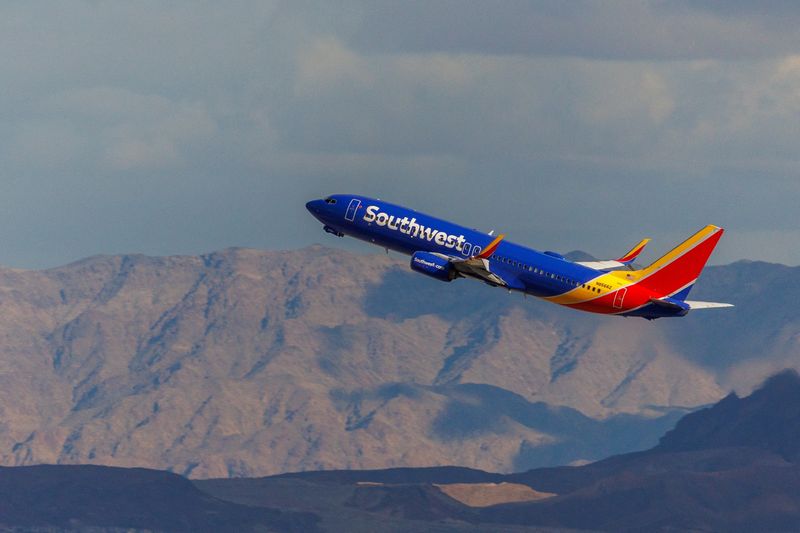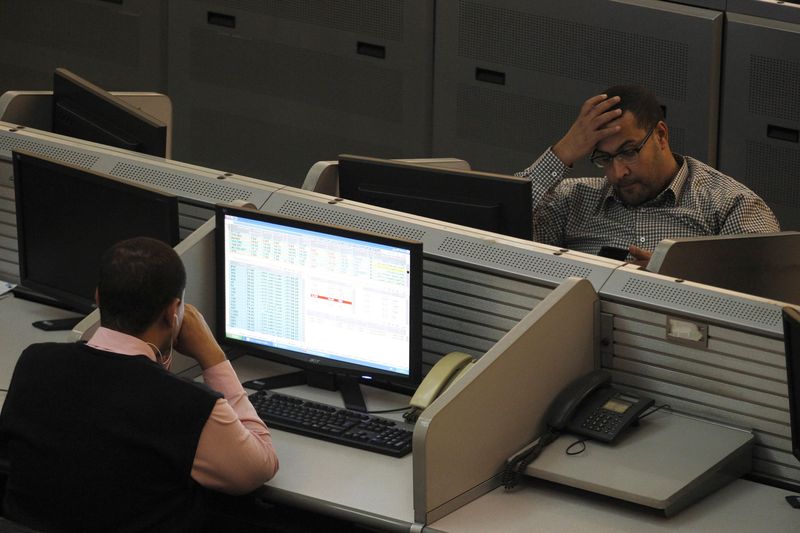By Rajesh Kumar Singh
CHICAGO (Reuters) -Southwest Airlines unveiled several initiatives on Thursday to shore up declining profits, including partnerships, customer vacation packages and aircraft sale-leasebacks, but activist investor Elliott Management shrugged off the plan.
Shares of Southwest rose 5.4% after the announcement, but are up only about 4% year to date, a gain that is well below 29% for Delta Air and 43% for United Airlines (O:). Elliott reiterated his demand for CEO Bob Jordan’s ouster. The hedge fund also said it remained committed to requesting a special shareholder meeting for the leadership review.
Elliott said the airline’s plan was “filled with long-standing promises of improved performance” and called for “credible leadership.” It accused Jordan of “playing with shareholders’ money.”
“Another promise of a better future from the same people who created the problems we face today,” it said in a statement.
While the airline has offered the hedge fund some concessions, it has ruled out any leadership change.
At the company’s first public investor meeting since 2022 Thursday in Dallas, Jordan said Southwest does not want a proxy fight with Elliott, but that the activist investor has shown “little or no interest” in working together.
He called the changes announced Thursday “the most transformational plan we’ve ever had.”
The initiatives complement previous plans to switch to assigned and extra legroom seats to attract premium travelers, and to launch night flights. However, the carrier will continue with the ‘bags fly free’ policy.
Southwest said these measures would generate approximately $4 billion in additional earnings before interest and taxes (EBIT) by 2027. The company expects an operating margin of at least 10%, a return of 15% on invested capital and more than $1 billion in free cash flow. in three years.
Savanthi Syth, aviation analyst at Raymond James, said the 2027 targets were encouraging but the airline must deliver on these targets.
On Thursday, Southwest also raised its third-quarter revenue guidance and announced a $2.5 billion stock buyback program.
The low-cost carrier has struggled to find new high-margin revenue streams as costs have ballooned.
The company’s operating margin fell from more than 13% in 2019 to 0.2% in the first half of this year, passenger volume is below pre-pandemic levels and its shares are down about 40% over the past three years.
The country has lowered its outlook at least eight times in the past 20 months, despite booming travel demand. Analysts expect profits to fall by about 83% in 2024 from a year ago.
The airline’s underperformance has raised questions about its business model. Jordan recognized that the company needed to evolve and transform. “Our model is not broken, but needs constant calibration and improvement,” he said.
NEW INITIATIVES
Before COVID-19 restrictions, Southwest had a record 47 straight years of profit. But plane delivery delays from aircraft maker Boeing (NYSE:) and post-pandemic travel patterns have hit profits.
To limit operational risks, Southwest plans to slow annual capacity growth by 1% to 2% between 2025 and 2027 and minimize hiring.
Southwest said this has reduced its aircraft needs, creating opportunities to monetize the value of its Boeing 737 fleet. The airline said it is considering selling its planes to leasing companies.
The shortage of new planes has made so-called sale-and-leaseback transactions a money-changer for some airlines. Southwest has nearly 700 new Boeing aircraft on order through 2031.
The company said it will launch a partnership with Icelandair for transatlantic connectivity in early 2025. It plans to add at least one additional partner airline next year.

It will also start selling holiday packages to customers.
Southwest appointed Robert Fornaro, former CEO of AirTran and Spirit Airlines (NYSE:), to the board.


